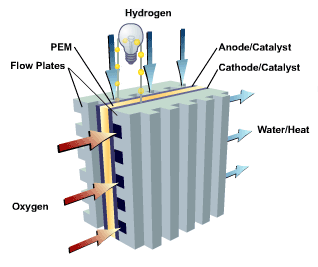The cost of making the materials? That's the manufacturing costs. Any material you have to make is, by definition, manufactured. It's a combination of raw materials and manufacturing costs, as you will recall me mentioning. You understood that earlier, so I don't see what's changed.
Oh, yes I do, your claims.
Offering one of the many points on which you moved the goalposts as evidence that the goalposts had always been there doesn't help your credibility in my opinion.
No Michael, right from the beginning of this discussion about the costs I made the distinction between Raw Materials like Platinum and Materials which are expensive to make like PEM.
So no moving of goal posts.
adoucette in 2390 said:
the fundamental issue is the cost of the actual materials,
MT said:
How much do the raw materials cost? (For the most expensive type you can think of if you like.)
adoucette in 2393 said:
The PEM membrane and the need for Platinum as a catalyst comes to mind.
The cost of the materials used in making fuel cells has always been the thing that has kept the cost high. In some cases it's raw materials like Platinum, but in other cases it's the cost/time/difficulty in making the materials needed.
Was how this started,
But in your response notice what YOU dropped:
MT in 2395 said:
adoucette said:
The cost of the materials used in making fuel cells has always been the thing that has kept the cost high.
If you're sure of that, then you must know what the cost is. Please tell me.
When you quoted me you dropped the QUALIFICATON that you are now contesting:
In some cases it's raw materials like Platinum, but in other cases it's the cost/time/difficulty in making the materials needed.
In any case I responded to you with the exact same qualifications:
adoucette in 2397 said:
Well yeah, like I pointed out in the previous post, they use Platinum for a catalyst and it costs more than gold and they use a as polymer electrolyte membrane that is apparently very expensive to make. (note the costs have already come down from where they were, Astronomical to just Very high, but it's not due to volume issues, its still a materials problem)
Last November Toyota released the price of their Fuel Cell vehicle for 2015, and it's an SUV that will go for ~$138,000 in Europe.
And note I pointed out that the PEM MATERIAL was
"very expensive to make", so right from the beginning I've always been talking about the cost of raw materials and the cost of manufactured materials that are very expensive to make.
If we just take the cost of raw materials then diamonds would be considered just as cheap as coal. But some materials are much more expensive to make.
And you did mention
It's a combination of raw materials and manufacturing costs, as you will recall me mentioning.
Except you mentioned that in post 2406, well AFTER the previous exchange, so clearly I was not moving any goal posts when discussing things like the cost of the PEM.
Indeed in 2406 you posted:
A dept. of energy report a couple of years ago calculated (based on that fuel cell type, and including the raw materials costs) that a fuel cell to produce 100kW would cost about five 5,000 dollars based on a production run of half a million units. That is not an insurmountable obstacle for most car owners.
Leaving out the fact that the report notes that that is for an H2 system and that the report agreed with me:
The PEM membrane is widely acknowledged as one of the more costly stack components and one needing to be reduced in cost to achieve a cost competitive fuel cell system. and though the report ASSUMES they can do so, as of yet that hasn't happened. And finally the report you quoted also states:
Many of the components not included in this study are significant contributors to the total fuel cell vehicle cost, and I've always been discussing the FULL fuel cell vehicle cost, not just the cost of the actual fuel cell.
Indeed, as late as post 2411 you still didn't realize the report you quoted was about H2 Fuel cells and suggested that was my choice:
MT said:
You chose to only discuss hydrogen either because they are the most expensive fuel cells you could think of or some other reason you're not being so forthcoming about.
When in fact H2 fuel cells is what the DOE is working on and what that report you quoted was about.


